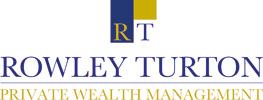Drawdown tax and flexible retirement income. What does it all mean?
June 28, 2019
Once you reach 55, a whole spread of opportunities will open themselves up to you. One such bonus is the fact that you can finally access that hard-saved pension fund. Up to 25% of your savings can be taken tax-free, with the remaining 75% being subject to income tax. The payable amount depends on your total income for the year and your tax rate. This is known as drawdown tax.
You’ll only have to pay tax if you decide to draw over the 25% threshold. In this case, any income you take will be added to the rest of your taxable income for that year, and will be taxed at 20% after you pass the personal threshold. Therefore, if you were to take out a large withdrawal pushing you into the£40,000 to £150,000 bracket, you could be taxed at 40%.
Your pension provider is required to deduct any tax before a withdrawal is paid and it’s likely that when you take a taxable payment for the first time, you’ll be taxed using an emergency tax code (it may be worth speaking to your pension provider about how you will be taxed).
How do you manage your pot?
If you choose to stay within the 25% lump sum, more often than not you’ll move the rest into one or more funds that allow you to take a taxable income at times to suit you. It’s wise to choose funds that match your income objectives and your attitude to risk, as the income you receive might be adjusted periodically depending on how well your investments are doing.
You can also move your pension pot gradually into income drawdown. The 25% bracket still applies to each amount you move across, so you can take a quarter of the amount tax-free and place the rest into drawdown.
A way to make your retirement income more flexible is to invest in an annuity or another type of income product, such as a gilt or corporate bond, which usually offer guarantees about growth and income.
However, it’s paramount that you carefully plan how much income you can afford to take under pension drawdown as you don’t want to run out of money. Factors such as living longer than expected, taking too much out too early and poor investment performance can potentially hinder your drawdown plans.
That’s why it’s important to regularly review your investments. In fact, we would always recommend getting in contact with us to help with this, as you want to be getting the most out of your pension pot and to avoid any unnecessary expenses or losses.
But should you even be drawing on your pension pot at all?
It may seem strange that we’d even ask that question as most people will need to use their pensions to fund their retirement. But if you’ve got significant other assets (property, savings, investments, etc.), and especially if you have also got a potential Inheritance Tax liability, then it may be much better from a tax perspective to consider using those other assets to fund your retirement first.
If you have any questions on how best to take your pensions, or whether you should be using other assets first, please contact us for independent professional advice.

